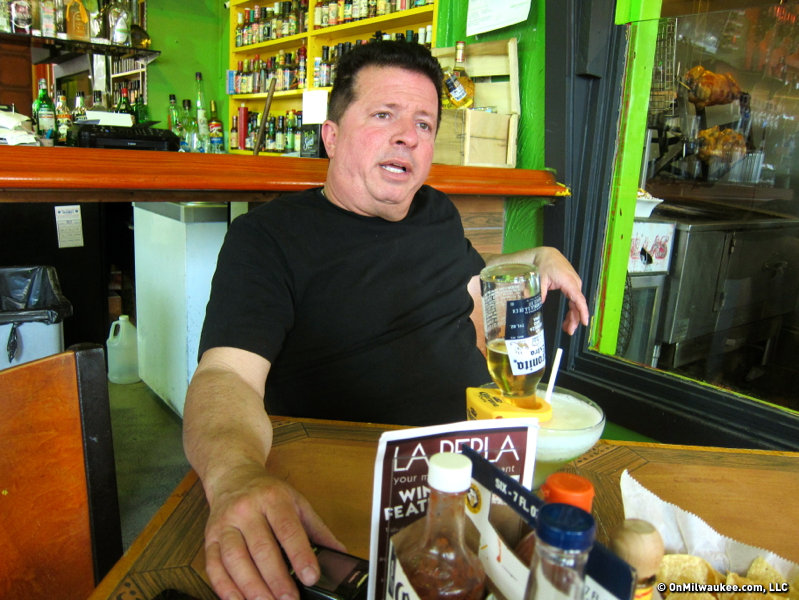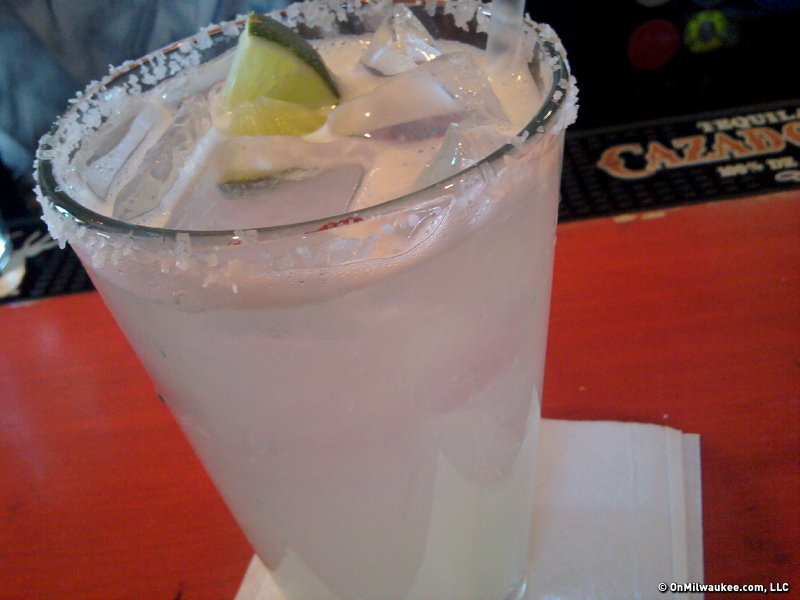Bienvenidos a Mexican Dining Week on OnMilwaukee.com. This week, in honor of Cinco de Mayo, we're spicing things up with daily articles about Mexican restaurants, foods, drinks, sweets and more. Enjoy a week of sizzling stories that will leave you craving Milwaukee's Latin offerings. Olé!
Piñatas are a traditional way to mark a celebration by distributing fruits and sweets in Mexican culture. The idea of a piñata goes back centuries; the earliest forms may come from China and clay versions that originated with the Aztecs in Central America were adopted and adapted – as many original people's traditions were – by Christian missionaries.
Milwaukeean Bertha Zamudio crafts piñatas by hand. She makes shapes traditional to Mexico, where she is originally from, and shapes that are popular today, characters such as Sponge Bob and the various Disney princesses.
Zamudio has worked 22 years at La Escuela Fratney, a public school in Riverwest offering two-way bilingual education in Spanish and English. Originally hired as parent coordinator, Zamudio is now a teacher's assistant.
Two of Zamudio's three children attended Fratney. One of Zamudio's daughters, who was part of the first Fratney cohort to graduate, has a communications degree from Marquette and is currently a substitute teacher at Fratney.
Zamudio says kids at Fratney love to make piñatas and she showcases their talents whenever she can. She has also made a school bus piñata, which currently hangs in a K-4 classroom at Fratney.
Students break one of Zamudio's piñatas at Fratney's end-of-year party, held each year in Kern Park.
"Piñata making is both time consuming and very therapeutic," says Zamudio.
The process begins with corn starch and water, which is heated to make it thicker. In some cases, Zamudio supplements this homemade paste with Elmer's school glue.
Most designs are based on a balloon, which can be made as big as necessary. Zamudio takes the balloon, applies the homemade paste to it, then takes strips of newspaper and wraps them around the base to make the piñata's shape. She will also use different paper materials as based on the needs of the design. For instance, a Sponge Bob piñata is formed around recycled cardboard, like a cereal box.
Zamudio only made her first Sponge Bob piñata a year ago; shortly thereafter, some friends asked for a princess one. Requests like these have taken the piñata maker further and further away from traditional designs, but she doesn't mind.
Traditionally, Zamudio says piñatas are filled with oranges, sugar cane, peanuts in the shell and some wrapped candy. Little prizes and school supplies are often included in the mix.
"Of course, here it's all candy. But I will occasionally still mix in some school supplies," she says.
Often, the piñata canción, or piñata song, is sung while party-goers attempt to break open these containers of sugary goodness.
The song goes, "Esta piñata es de muchas mañas, sólo contiene naranjas y cañas" which translates into "this piñata is full of a lot of manna (and isn't all candy from the gods?), only it contains oranges and sugar cane."
Piñatas can be simple or intricate; the only limitation is the maker's imagination. Piñatas have historically been made from clay in addition to the papier mache versions – which are perhaps more malleable – but our attraction to what are, essentially, very large party favors, cannot be denied.
"How do you break something so beautiful, right?" says Zamudio.
Piñatas have always been a complement to celebration, from the early Aztec religious expressions for their deity to last weekend's birthday party in Brown Deer. Piñatas are made to be broken, to spill out their earthly contents in a way that appeases the gods.
Zamudio's favorite piñatas to make are the star and donkey shapes.
"But I like making different designs and experimenting," says Zamudio.
The star-shaped piñata is popular around Christmas because it often evokes the star of Bethlehem. The donkey shape is more specific to Mexico, much like the oxen and cow shapes that were particular to China hundreds of years ago.
Zamudio says piñatas are most popular for kids' birthdays today in the United States. But breaking a piñata on birthdays has become more popular in Mexico now, too, thanks to the cross-cultural communication between these two countries.
Historically, the breaking of piñatas most often occurred during Las Posadas and on Christmas Day. This long tradition continues in Mexico and Guatemala.
Las Posadas is a nine-day celebration ending on Christmas eve during which people reenact the nightly stops made by Mary and Joseph asking for housing until they ended up in that Bethlehem stable.
During Las Posadas, folks knock on neighbors' doors for songs and the ritualistic refusal of lodging to the knockers. Then candy is shared with the neighborhood children, often by breaking a piñata.
In Mexico, piñatas were traditionally made out of clay pots, which Zamudio says can actually be dangerous since smashing a clay pot with a stick would obviously scatter bits of clay, potentially hitting family members and party-goers.
Zamudio learned how to make clay pot piñatas as a child. When she was a little girl in Michoacán, her family's tradition at Christmas was to sing carols, pray the rosary, eat dinner and then break the piñata.
Until recently, Zamudio was selling her piñatas mostly to friends and people she comes in contact with at the school. Last Christmas, however, she had a supply at Riverwest Co-op, 733 E. Clarke St.
Zamudio is currently making a basketball piñata and plans to continue making special orders.
Zamudio first traveled to Wisconsin to attend Dominican College in Racine, a four-year liberal arts school which operated from 1947 to 1974. Zamudio came to Milwaukee for break one summer and realized there was a large Puerto Rican community here.
"I wanted to learn about their culture, so I stayed and mingled," says Zamudio.
People interested in a piñata made by Zamudio can contact her at the number below or at La Escuela Fratney which she says is "like my second home."
Royal Brevväxling is a writer, educator and visual artist. As a photo essayist, he also likes to tell stories with pictures. In his writing, Royal focuses on the people who make Milwaukee an inviting, interesting and inspiring place to live.
Royal has taught courses in critical pedagogy, writing, rhetoric and cultural studies at several schools in Wisconsin and Minnesota. He is currently Adjunct Associate Professor of Humanities at Milwaukee Institute of Art and Design.
Royal lives in Walker’s Point with his family and uses the light of the Polish Moon to illuminate his way home.







